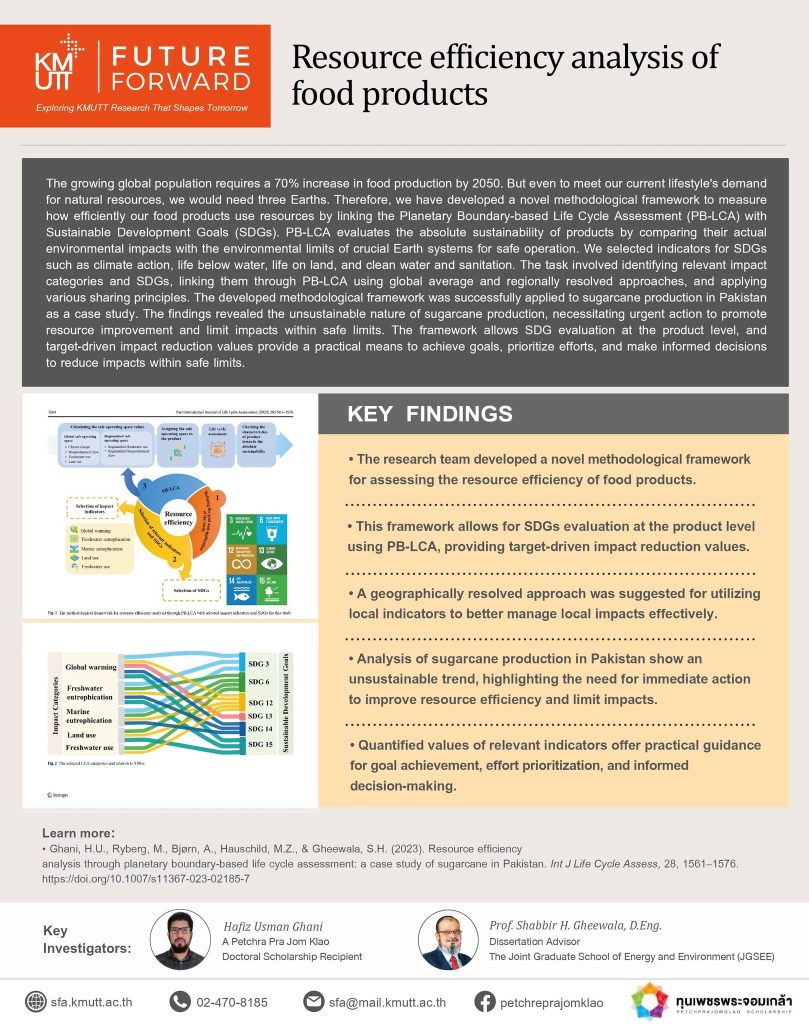The growing global population requires a 70% increase in food production by 2050. But even to meet our current lifestyle’s demand for natural resources, we would need three Earths. Therefore, we have developed a novel methodological framework to measure how efficiently our food products use resources by linking the Planetary Boundary-based Life Cycle Assessment (PB-LCA) with Sustainable Development Goals (SDGs). PB-LCA evaluates the absolute sustainability of products by comparing their actual environmental impacts with the environmental limits of crucial Earth systems for safe operation. We selected indicators for SDGs such as climate action, life below water, life on land, and clean water and sanitation. The task involved identifying relevant impact categories and SDGs, linking them through PB-LCA using global average and regionally resolved approaches, and applying various sharing principles. The developed methodological framework was successfully applied to sugarcane production in Pakistan as a case study. The findings revealed the unsustainable nature of sugarcane production, necessitating urgent action to promote resource improvement and limit impacts within safe limits. The framework allows SDG evaluation at the product level, and target-driven impact reduction values provide a practical means to achieve goals, prioritize efforts, and make informed decisions to reduce impacts within safe limits.
𝗞𝗘𝗬 𝗙𝗶𝗻𝗱𝗶𝗻𝗴𝘀
- The research team developed a novel methodological framework for assessing the resource efficiency of food products.
- This framework allows for SDGs evaluation at the product level using PB-LCA, providing target-driven impact reduction values.
- A geographically resolved approach was suggested for utilizing local indicators to better manage local impacts effectively.
- Analysis of sugarcane production in Pakistan show an
unsustainable trend, highlighting the need for immediate action to improve resource efficiency and limit impacts. - Quantified values of relevant indicators offer practical guidance for goal achievement, effort prioritization, and informed decision-making.
𝗙𝗨𝗧𝗨𝗥𝗘 𝗙𝗢𝗥𝗪𝗔𝗥𝗗 ❯❯
Exploring KMUTT Research That Shapes Tomorrow
Life Cycle Sustainability Assessment Laboratory (LCSAL), The Joint Graduate School of Energy and Environment (JGSEE)


